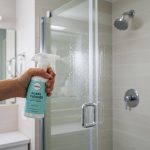[Check Latest Arrivals toilet bowl caulk on Amazon.]
# How to Caulk a Toilet Bowl Like a Pro: Step-by-Step Guide [2026]
So, you’re staring at that unsightly gap around your toilet bowl – the one that’s probably collecting dust, maybe even some… other things. Don’t worry; you’re not alone! Caulking a toilet bowl isn’t exactly rocket science, but doing it right can prevent leaks, keep your bathroom sanitary, and give it a fresh, clean look. This step-by-step guide, updated for 2026, will show you how to caulk a toilet bowl like a seasoned pro. You’ll be amazed at how easy it is to achieve professional-looking results and eliminate that irritating eyesore. Let’s get started!
[Explore Top Rated toilet bowl caulk on Amazon.]
## Step 1: Gather Your Supplies
Before you even think about touching that old, cracked caulk, make sure you have everything you need. Nothing’s worse than getting halfway through a project and realizing you’re missing a crucial tool. Here’s your checklist:
* **Utility Knife or Caulk Removal Tool:** For slicing through and removing the old caulk. A dedicated caulk removal tool can be especially helpful for stubborn caulk.
* **Scraper or Putty Knife:** To scrape away any remaining caulk residue.
* **Stiff Brush or Vacuum:** To clean the area and remove any debris.
* **Clean Rags or Paper Towels:** For wiping surfaces and cleaning up messes.
* **Isopropyl Alcohol:** For cleaning the area to ensure proper adhesion of the new caulk.
* **Caulk Gun:** A must-have for applying the new caulk. Choose a good quality caulk gun for smooth and even application.
* **Toilet Bowl Caulk:** Obviously! Make sure you choose a caulk specifically designed for bathroom use. Look for features like mildew resistance and waterproof sealing. More on that later, but for now, DAP Kwik Seal Ultra is a great choice.
* **Caulk Smoothing Tool or Finger:** For creating a smooth, professional finish. If using your finger, wear a disposable glove.
* **Painter’s Tape (Optional):** To create clean lines and protect surrounding surfaces.
[Explore Top Rated toilet bowl caulk on Amazon.]
## Step 2: Remove the Old Caulk
This is arguably the most important step. A clean surface is crucial for the new caulk to adhere properly. Don’t skimp on this part!
1. **Score the Caulk:** Use your utility knife or caulk removal tool to carefully score the caulk along both edges where it meets the toilet bowl and the floor. Be careful not to scratch or damage the toilet or flooring.
2. **Peel and Pull:** Insert the tip of the utility knife or caulk removal tool under the scored caulk and begin to peel it away. You may need to work in sections, especially if the caulk is old and brittle. Using pliers can sometimes help grip and pull the caulk.
3. **Scrape Away Residue:** Use your scraper or putty knife to remove any remaining caulk residue. Hold the scraper at a slight angle and apply firm, even pressure. Be patient and persistent; it may take some effort to remove all the residue.
4. **Clean the Area:** Once you’ve removed all the caulk, thoroughly clean the area with a stiff brush or vacuum to remove any loose debris.
5. **Wipe with Isopropyl Alcohol:** Dampen a clean rag or paper towel with isopropyl alcohol and wipe down the entire area where the new caulk will be applied. This will remove any remaining dirt, grease, or mildew and ensure proper adhesion. Let it dry completely before moving on.
[Explore Top Rated toilet bowl caulk on Amazon.]
## Step 3: Prepare for Caulking
Now that the old caulk is gone and the area is clean, it’s time to prepare for the application of the new caulk.
1. **Apply Painter’s Tape (Optional):** If you want to create perfectly straight and clean caulk lines, apply painter’s tape along both edges of the area to be caulked. Leave a small gap between the tape to accommodate the caulk. This step is optional, but it can definitely help achieve a more professional-looking finish.
2. **Load the Caulk Gun:** Cut the tip of the caulk tube at a 45-degree angle. The size of the opening will determine the width of the caulk bead. Insert the tube into the caulk gun and advance the plunger until it is snug against the bottom of the tube.
[Explore Top Rated toilet bowl caulk on Amazon.]
## Step 4: Apply the New Toilet Bowl Caulk
This is where the magic happens! Take your time and aim for a smooth, consistent bead of caulk.
1. **Position the Caulk Gun:** Hold the caulk gun at a 45-degree angle to the surface and apply steady, even pressure to the trigger.
2. **Apply a Consistent Bead:** Move the caulk gun along the joint in a smooth, continuous motion, applying a consistent bead of caulk. Avoid stopping and starting, as this can create an uneven finish. Aim for a bead that is just large enough to fill the gap between the toilet bowl and the floor.
3. **Overlap (If Necessary):** If you need to stop and start, overlap the new bead slightly with the previous one to ensure a seamless seal.
[Explore Top Rated toilet bowl caulk on Amazon.]
## Step 5: Smooth the Caulk
This is crucial for achieving a professional-looking finish and ensuring a watertight seal.
1. **Wet Your Finger or Smoothing Tool:** Dip your finger (wearing a disposable glove) or a caulk smoothing tool into a small amount of water. This will prevent the caulk from sticking to your finger or tool and allow you to create a smooth, even surface.
2. **Smooth the Bead:** Run your wet finger or smoothing tool along the bead of caulk, applying gentle pressure to smooth it out. Remove any excess caulk.
3. **Wipe Away Excess:** Wipe away any excess caulk with a clean, damp rag or paper towel.
4. **Repeat (If Necessary):** Repeat the smoothing process until you are satisfied with the finish.
[Explore Top Rated toilet bowl caulk on Amazon.]
## Step 6: Remove the Painter’s Tape (If Used)
If you used painter’s tape, carefully remove it while the caulk is still wet. Pull the tape away at a 45-degree angle to avoid lifting the caulk.
[Explore Top Rated toilet bowl caulk on Amazon.]
## Step 7: Allow the Caulk to Cure
Now comes the hardest part: waiting! Allow the caulk to cure completely according to the manufacturer’s instructions. This usually takes about 24-48 hours. Avoid using the toilet or getting the area wet during this time.
[Explore Top Rated toilet bowl caulk on Amazon.]
## Step 8: Inspect and Touch Up (If Necessary)
After the caulk has cured, inspect it for any gaps, cracks, or imperfections. If you find any, you can easily touch them up by applying a small amount of caulk and smoothing it out.
### Tools for the Job – Recommended Product
As mentioned above, the **DAP Kwik Seal Ultra** is a fantastic choice for this job. This caulk is specifically designed for kitchens and bathrooms. It’s waterproof, mildew-resistant, and paintable, making it perfect for sealing around your toilet bowl. Its advanced formula provides a long-lasting, flexible seal that won’t crack or shrink. Its key features – mildew resistance being paramount – ensure that nasty mold and mildew won’t be taking hold in your bathroom. It’s easy to apply and tool, making the process simpler even for beginners.
[Explore Top Rated toilet bowl caulk on Amazon.]
## Pro Tips / FAQ Section
* **Why is my toilet bowl caulk turning black?** This is usually due to mildew growth. Make sure to use a caulk that is specifically formulated to resist mildew, and clean the area regularly with a bleach solution.
* **Can I use any type of caulk around my toilet bowl?** No. It’s crucial to use a caulk that is specifically designed for bathroom use. These caulks are typically waterproof and mildew-resistant.
* **How often should I re-caulk my toilet bowl?** It depends on the quality of the caulk and the conditions in your bathroom. Generally, you should re-caulk your toilet bowl every 2-3 years, or as soon as you notice any cracks, gaps, or mildew growth.
* **What if the gap between my toilet bowl and the floor is too large?** For larger gaps, you may need to use a backer rod before applying the caulk. A backer rod is a foam rod that is inserted into the gap to provide a base for the caulk.
* **How do I prevent the caulk from sticking to my finger when smoothing it?** Simply dip your finger in a small amount of water or soapy water before smoothing the caulk. This will prevent the caulk from sticking and allow you to create a smooth, even finish.
* **Should the toilet be caulked all the way around?** This is a point of contention. Some plumbers only caulk the sides and the front, leaving the back uncaulked. The idea is that this allows any leaks to be easily detected. For aesthetic and sanitary reasons, many homeowners prefer to caulk the entire toilet base. Consider your priorities when making this decision.
[Explore Top Rated toilet bowl caulk on Amazon.]
## Encouraging Conclusion
Congratulations! You’ve successfully caulked your toilet bowl like a pro! Not only have you improved the look of your bathroom, but you’ve also protected it from water damage and mold growth. With a little patience and these simple steps, you can keep your bathroom looking its best for years to come. Now, go admire your handiwork… you earned it! And remember, a small investment in toilet bowl caulk and a few simple tools can save you a lot of headaches and money in the long run. You’ve got this!
[Shop Budget-Friendly toilet bowl caulk on Amazon.]
![How to Caulk a Toilet Bowl Like a Pro: Step-by-Step Guide [2026]](https://www.besthomecleaningreviews.com/wp-content/uploads/2025/10/2897-how-to-caulk-a-toilet-bowl-like-a-pro-step-by-step-guide-2026.png)




![Purell Soap Dispenser: Which is Best for Your Home or Office? [2026 Guide]](https://www.besthomecleaningreviews.com/wp-content/uploads/2025/10/514-purell-soap-dispenser-which-is-best-for-your-home-or-office-2026-guide-150x150.png)




